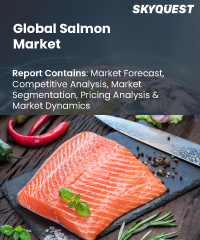
Report ID: SQMIG30C2128

Report ID:
SQMIG30C2128 |
Region:
Global |
Published Date: February, 2024
Pages:
157
|
Tables:
95 |
Figures:
76
Europe, particularly Norway is a significant contributor to global salmon production, with well-established aquaculture practices and a reputation for high-quality seafood. Norwegian salmon has a strong presence in international markets, particularly in Europe and North America, contributing to the region's dominance. Norway's commitment to sustainable aquaculture practices aligns with the growing demand for responsibly sourced seafood.The Asia-Pacific region is experiencing a surge in seafood consumption, driven by rising incomes, urbanization, and a growing awareness of the health benefits of salmon. Countries like China and Japan are becoming key players in the global salmon market, with a growing appetite for premium seafood products. As consumers in Asia-Pacific diversify their diets and seek healthier protein options, salmon's popularity is expected to fuel rapid market growth in the region.
Our industry expert will work with you to provide you with customized data in a short amount of time.
REQUEST FREE CUSTOMIZATIONWant to customize this report? This report can be personalized according to your needs. Our analysts and industry experts will work directly with you to understand your requirements and provide you with customized data in a short amount of time. We offer $1000 worth of FREE customization at the time of purchase.

Report ID: SQMIG30C2128